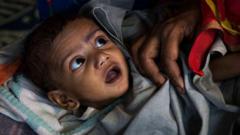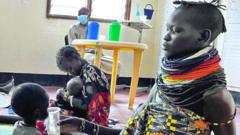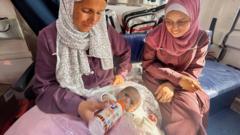Researchers highlight the impact of social identity, particularly caste, on child nutrition, shedding light on a complex public health issue in India.
The Silent Crisis: Caste Disparities and Child Stunting in India

The Silent Crisis: Caste Disparities and Child Stunting in India
New research uncovers the link between caste discrimination and India’s high child stunting rates.
Decades of caste discrimination are at the heart of India's staggering child stunting crisis, where recent studies indicate that a worrying 35% of the nation's 137 million children under five are affected. This situation positions India unfavorably against Sub-Saharan Africa, where the average stunting rate across 49 countries is slightly lower at 33.6%. The findings, presented by Ashwini Deshpande from Ashoka University and Rajesh Ramachandran from Monash University, emphasize that focusing solely on physical growth metrics—thereby examining why Indian children are shorter than their Sub-Saharan counterparts—overlooks a critical aspect: the pervasive influence of social identity rooted in caste.
Child stunting is marked by a child's height falling well below the expected average for their age, a telling sign of nutritional deficits. In the crucial window of the "first 1,000 days", where 80% of brain development occurs by age two, the environment and resources available to a child heavily influence future potential. As both India and Sub-Saharan Africa emerge with burgeoning middle-class populations and youthful demographics, the alarming statistics resonate. The World Bank reported in 2021 that these regions encapsulate over 85% of the world's impoverished population, signaling shared battles against poverty and malnutrition.
A critical analysis of India’s stunting conundrum examined data revealing that marginalized groups—such as adivasis and Dalits—are especially vulnerable, comprising more than a third of under-fives in the context. Those within higher caste categories exhibit significantly lower stunting rates at 27% compared to their disadvantaged peers. The disparity between caste groups persists even after considering determinants like maternal education, household economic status, and health practices.
Historical narratives surrounding stunting have often sparked debates, with some attributing differences to genetic factors or implicating nutrition trends across generations. However, established evidence is clear: children from impoverished families or less-educated mothers are particularly susceptible to malnutrition and stunting. In contrast, systemic issues like better nutrition access and healthier environments for higher-caste children highlight an urgent need for addressing caste-related disparities.
Amid gradual improvements in health interventions reducing stunting across various demographics, the nuances of caste dynamics remain crucial to grasping the full spectrum of child nutrition challenges in India. The recent analysis utilized demographic and health surveys from 2019-21 in India, compared with data from 19 Sub-Saharan African nations from 2015 onwards, analyzing anthropometric results for over 195,000 children under five in India and about 202,000 in Africa.
This exploration underscores that, instead of reducing stunting to a mere physical benchmark, recognizing the depth of social influences, especially caste status, is imperative for understanding and addressing the malnutrition crisis among Indian children.























